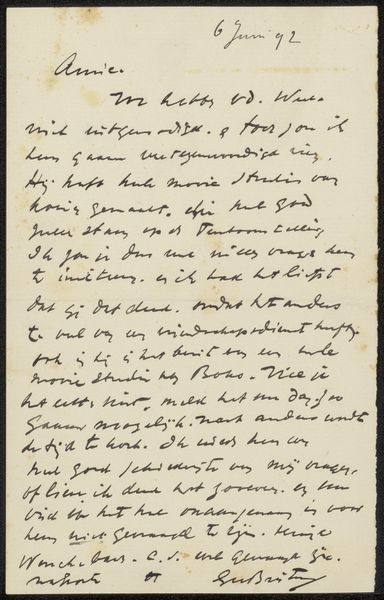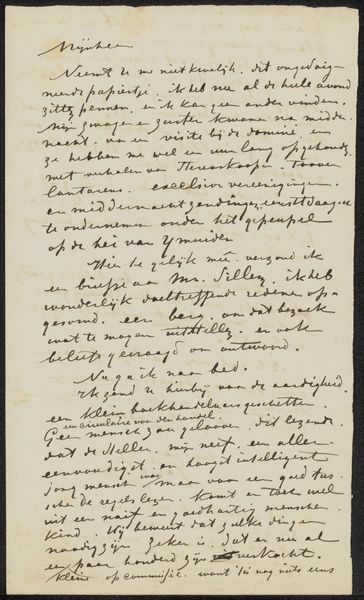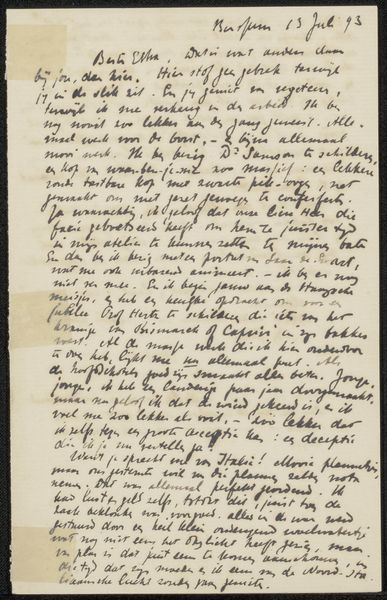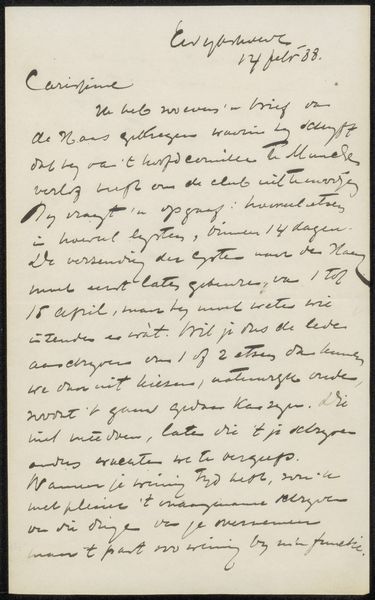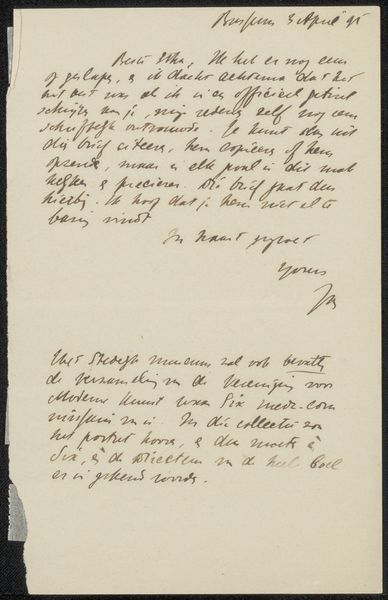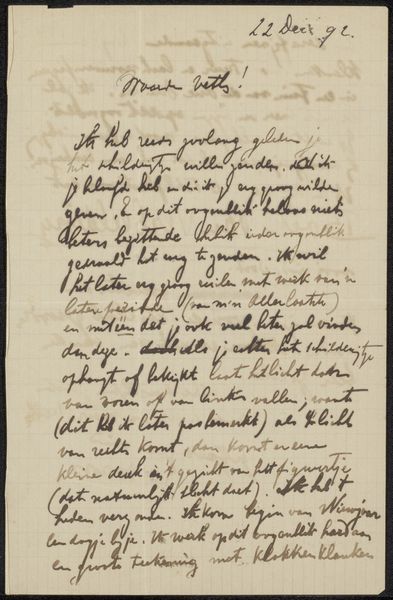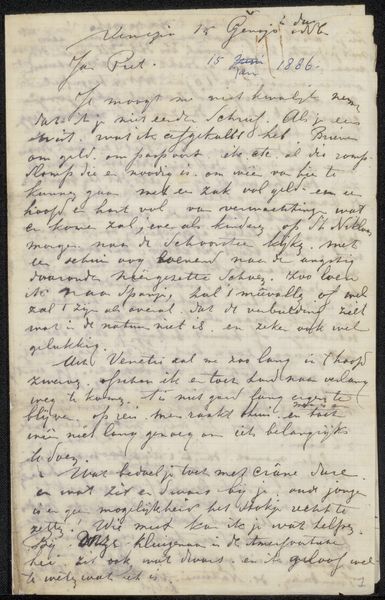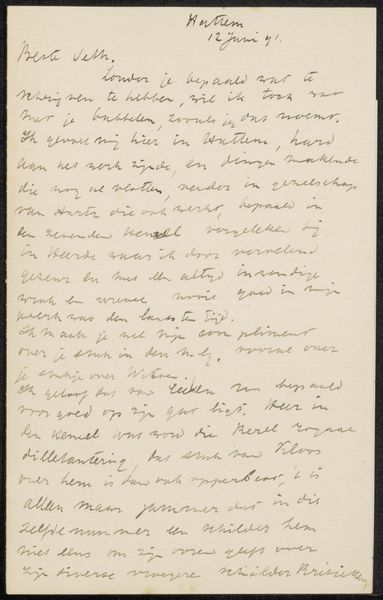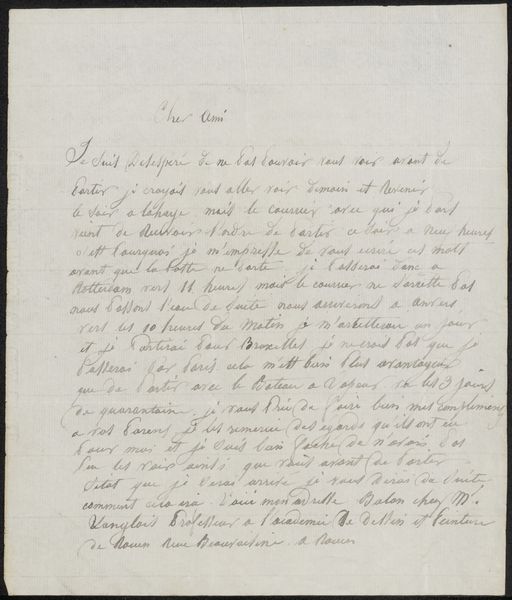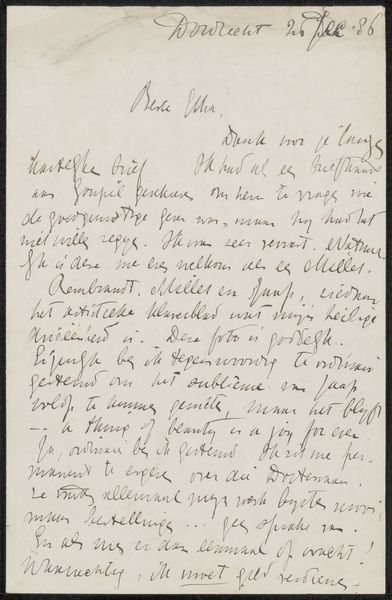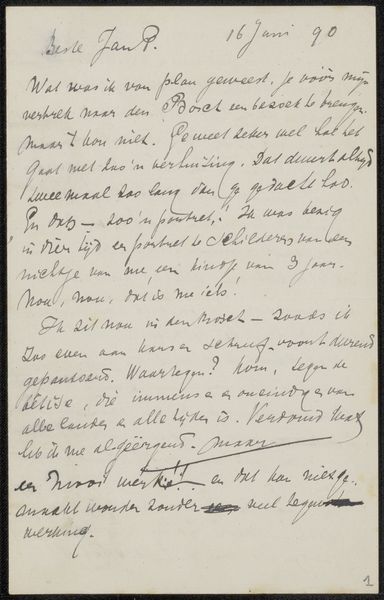
Copyright: Rijks Museum: Open Domain
Curator: We’re looking at a fascinating document: a letter titled "Brief aan Jan Veth," created by George Hendrik Breitner. Though the exact year is uncertain, it's thought to have been penned sometime between 1892 and 1895. It’s a striking example of Breitner's drawing skills, using ink on paper. Currently, this piece resides in the Rijksmuseum collection. Editor: My immediate impression is one of intimacy. The handwriting, while neat, feels incredibly personal and direct, offering a fleeting glimpse into the thoughts of the artist. It is fascinating in its raw informality. Curator: Breitner's connection to Jan Veth is quite relevant here. Veth was a fellow artist, critic, and writer. Their relationship, as reflected in this letter, highlights the intellectual and artistic circles in the Netherlands at the end of the 19th century. This document serves as primary source material to reveal exchanges among artists that spurred artistic production. Editor: And I'm curious about the act of letter writing itself. In the late 19th century, a letter was a physical object imbued with presence, carrying emotion, and connecting sender and receiver. A physical letter held a specific weight of authenticity in ways digital communication now often lacks. What visual cues are there within the script itself that reinforce a particular message? Curator: Good question. Consider the medium—ink on paper. Breitner’s choice is telling. In an era defined by mass production and urbanization, his embrace of this hand-written form might signify a conscious choice to preserve the authenticity of human interaction and thought, at the same time that Impressionism proposed to capture a new way of seeing, linked to the speed of the modern metropolis. Editor: I'm particularly drawn to how the loops and lines create a rhythm, almost like musical notes across the page. I imagine Veth receiving this and immediately sensing the emotional landscape of the writer – from the energy in the strokes to the deliberate crossing of a t. It's a direct, unedited, imprint of thought. Curator: Analyzing this letter offers a glimpse into the dialogue of the art world during Breitner's time. The content is likely focused on aesthetic, personal, and professional interactions with contemporaries, illustrating social relationships around artistic work. Editor: For me, this image of ink on paper invites meditation. A conversation across time and artistic philosophies that, even without translation, communicates volumes about connection and intention. A very simple and compelling image that shows what a potent historical relic something as mundane as a handwritten note may be.
Comments
No comments
Be the first to comment and join the conversation on the ultimate creative platform.
